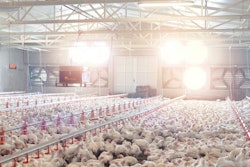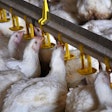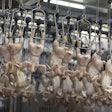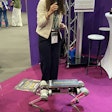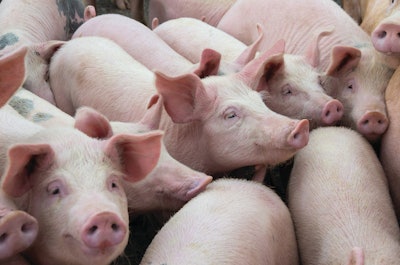
Gene editing is being used in the hopes of developing pigs that are resistant to the porcine respiratory and reproductive syndrome (PRRS) virus, with several groups announcing recent advances.
PRRS causes reproductive failure in breeding stock and respiratory tract illness in young pigs. The animals may exhibit clinical signs inclusive of a phase of reduced appetite, fever, lethargy, depression and possibly respiratory distress or vomiting. In addition, the virus modulates the pig’s immune system, making the animal more susceptible to other infectious diseases. The costs to the U.S. swine sector from PRRS virus annually total an estimated US$1.1 billion.
“PRRS is a viral disease with immunosuppressive effects on swine that can worsen the clinical impacts of bacterial co-infections. As a result, veterinarians need to use additional antibiotics to care for the affected animals,” said Isadora Machado, a graduate research assistant at Iowa State University (ISU) College of Veterinary Medicine.
Machado recently led a research project at ISU to quantify how much a PRRS outbreak impacts antibiotic use on a pig farm. The study found that injectable and water antimicrobial use in groups of nursery pigs increased 379 percent during the 15-week epidemic phase after the farm became PRRS-positive. The use of injectable antibiotics also increased 274 percent in older pigs, closer to market weight. While both groups showed a significant increase in antibiotic use following a PRRS outbreak, there is a greater impact on nursery and grower pigs because their immune systems are less developed than finisher pigs.
The Pig Improvement Co. (PIC) has used gene editing technology to delete a very small portion of the pig’s DNA that encodes a protein that the virus uses to enter and infect the pig’s cells. With this small gene edit, the pig is resistant to PRRS, as the virus is unable to enter the cells and replicate. Like humans inherit traits from their parents, the pig’s offspring will inherit the PRRS-resistant trait.
“Adopting the PRRS-resistant pig can have secondary benefits, including improving the overall health of the herd and reducing the need to use antibiotics,” said Lucina Galina, Ph.D., technical project director at PIC. “This is one way PIC is supporting antimicrobial stewardship in animal protein production, and helping food system stakeholders meet animal welfare and antibiotic reduction goals.”
Separately, precision breeding company Acceligen has published work on breeding pigs resistant to the PRRS virus in Antiviral Research.
“It is very rare in swine disease research to have an idea evolve from a concept outlined on a piece of paper to a new product that will help producers eliminate a dreaded disease,” said Raymond (Bob) Rowland, professor at the University of Illinois, a senior author on the paper and a world-recognized expert on PRRS virus.
Acceligen CEO and paper co-author Tad Sonstegard said the results of this research demonstrate the company’s approach to breed PRRS virus-resistant pigs could make this trait available to the entire industry.
“The economic impact of utilizing PRRSV-resistant pigs may be positive and significant for the pork industry, eliminating the need for severe mitigation strategies and costly care,” said Rocco Morelli, CEO of Acceligen parent company Recombinetics Inc. “Ultimately, a healthier pig population contributes to a more sustainable and economically viable swine industry.”


